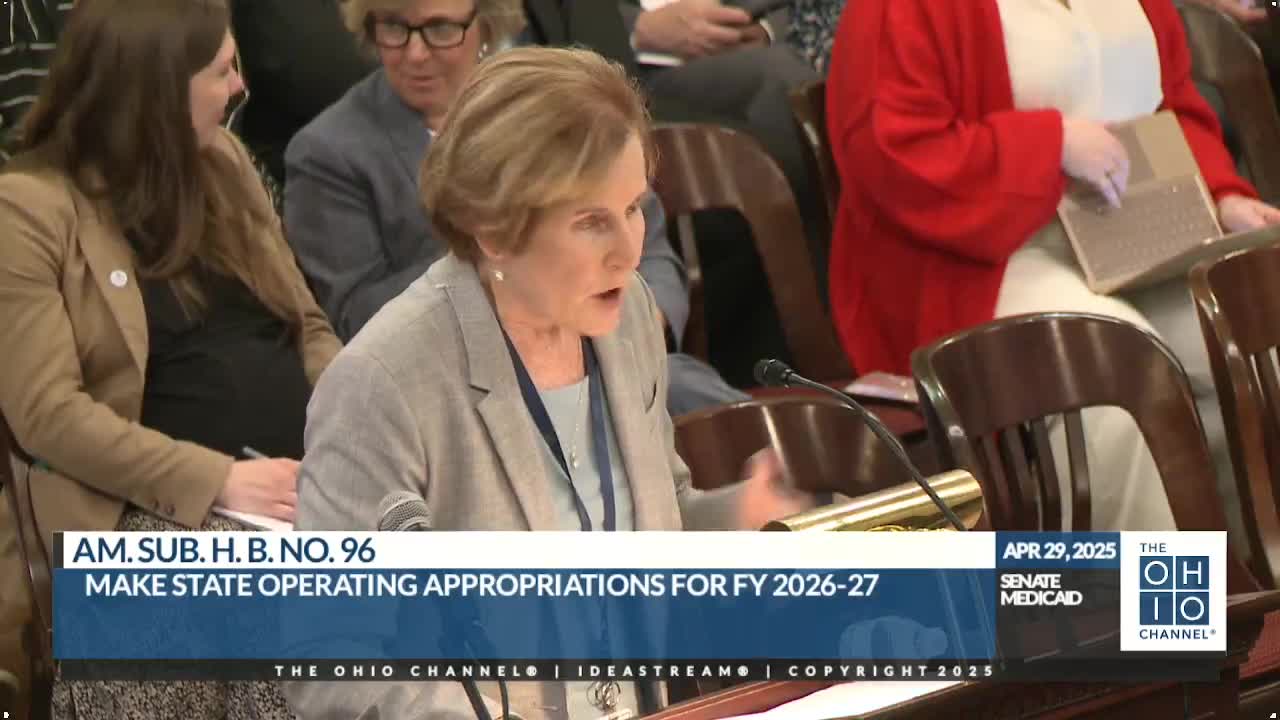Legislature doubles Medicaid rate increases in House Bill 33 budget decisions
April 29, 2025 | Medicaid, Senate, Committees, Legislative, Ohio
This article was created by AI summarizing key points discussed. AI makes mistakes, so for full details and context, please refer to the video of the full meeting. Please report any errors so we can fix them. Report an error »

During a recent meeting of the Ohio Senate Medicaid Committee, key discussions centered around the implications of federal funding and significant rate increases for hospitals as part of the state’s budget considerations. The meeting highlighted the ongoing challenges faced by the healthcare sector, particularly in relation to staffing and financial sustainability.
A primary focus was on House Bill 33, which introduced substantial rate increases for hospitals. These increases were driven by pressures from the hospital community, which expressed concerns about retaining personnel and the broader issues related to hiring in the healthcare industry. The committee noted that the legislature had more than doubled the rate increases initially recommended by the governor, reflecting the General Assembly's influential role in shaping budgetary decisions that directly impact healthcare costs.
The discussions included a detailed analysis of how these rate increases contribute to the overall Medicaid budget. A chart presented during the meeting illustrated the financial implications of these decisions, indicating that they would have lasting effects on future budgetary allocations. The committee emphasized the importance of understanding these dynamics as they navigate the complexities of healthcare funding.
Additionally, the meeting touched on the caseload overview, with further details provided in the appendix for committee members. This aspect of the discussion underscored the growing demand for Medicaid services and the need for careful planning to address the needs of Ohio's residents.
In conclusion, the Ohio Senate Medicaid Committee's meeting underscored the critical intersection of legislative decisions and healthcare funding. As the state grapples with rising costs and staffing challenges, the implications of these discussions will be felt across the healthcare landscape in Ohio. The committee's ongoing work will be essential in shaping a sustainable future for Medicaid services in the state.
A primary focus was on House Bill 33, which introduced substantial rate increases for hospitals. These increases were driven by pressures from the hospital community, which expressed concerns about retaining personnel and the broader issues related to hiring in the healthcare industry. The committee noted that the legislature had more than doubled the rate increases initially recommended by the governor, reflecting the General Assembly's influential role in shaping budgetary decisions that directly impact healthcare costs.
The discussions included a detailed analysis of how these rate increases contribute to the overall Medicaid budget. A chart presented during the meeting illustrated the financial implications of these decisions, indicating that they would have lasting effects on future budgetary allocations. The committee emphasized the importance of understanding these dynamics as they navigate the complexities of healthcare funding.
Additionally, the meeting touched on the caseload overview, with further details provided in the appendix for committee members. This aspect of the discussion underscored the growing demand for Medicaid services and the need for careful planning to address the needs of Ohio's residents.
In conclusion, the Ohio Senate Medicaid Committee's meeting underscored the critical intersection of legislative decisions and healthcare funding. As the state grapples with rising costs and staffing challenges, the implications of these discussions will be felt across the healthcare landscape in Ohio. The committee's ongoing work will be essential in shaping a sustainable future for Medicaid services in the state.
View full meeting
This article is based on a recent meeting—watch the full video and explore the complete transcript for deeper insights into the discussion.
View full meeting
